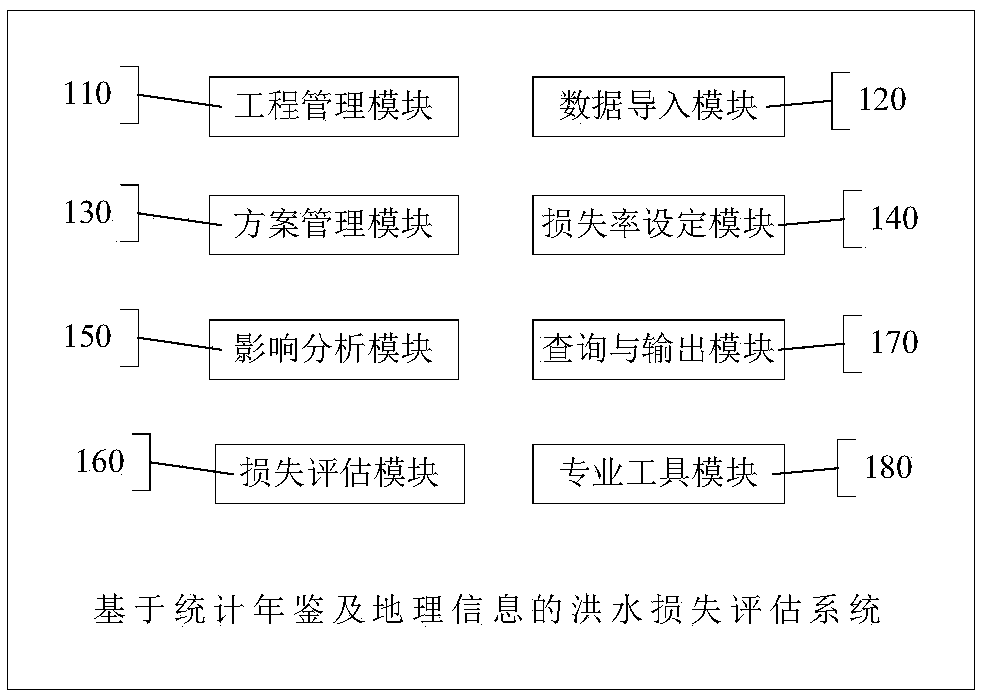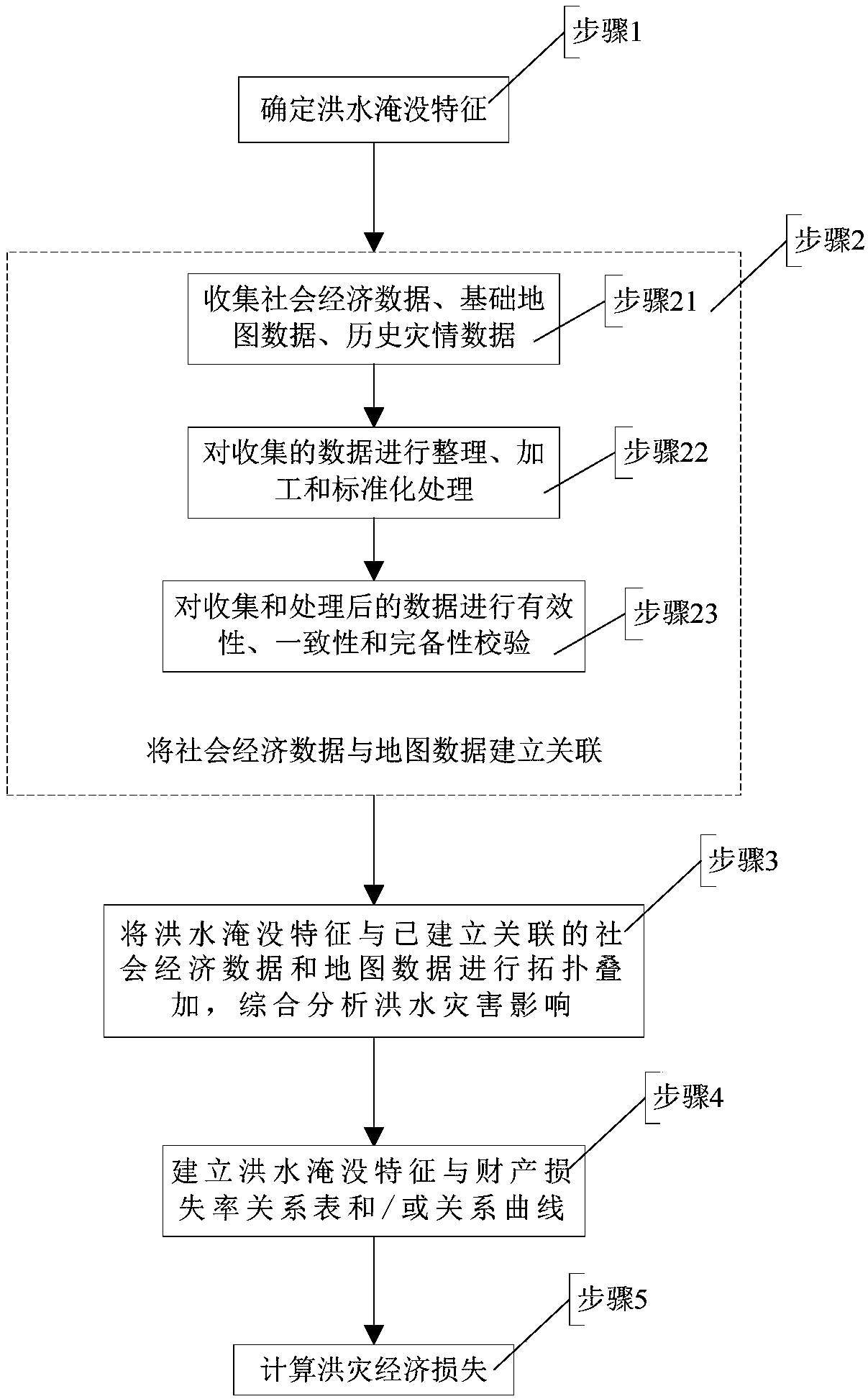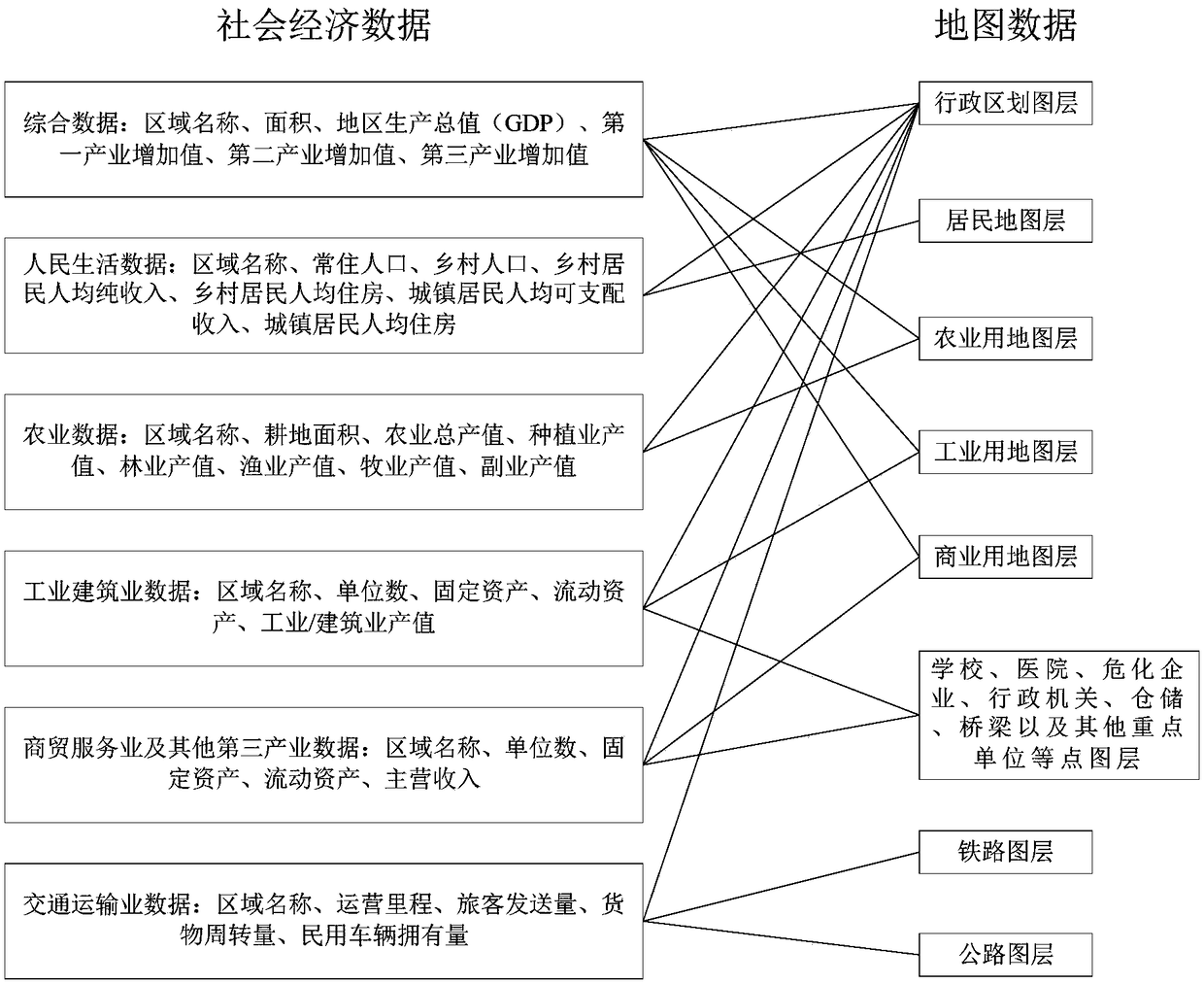Flood loss assessment method and system based on statistical yearbook and geographic information
A geographic information and evaluation system technology, applied in the field of flood loss assessment based on statistical yearbooks and geographic information, can solve problems such as analysis and assessment of flood disaster impact and loss
- Summary
- Abstract
- Description
- Claims
- Application Information
AI Technical Summary
Problems solved by technology
Method used
Image
Examples
Embodiment 1
[0115] The flow of the flood loss assessment method based on the statistical yearbook and geographic information, such as figure 1 shown.
[0116] Execution Step 1: Determine the flood submergence characteristics, and determine the flood submergence characteristics such as the flood submergence range, submergence depth, submergence duration, and flood velocity based on mathematical model simulation, historical investigation or field measurement.
[0117] Execute Step 2: Link socioeconomic data with map data. Execute Step 21: Collect socioeconomic data, basic map data and historical disaster data. The socioeconomic data mainly come from the socioeconomic statistical yearbooks of administrative units at all levels. At the same time, typical survey data of regional socioeconomic and special statistical data of key objects can be used Published data; the basic map data mainly comes from the administrative division map, the distribution map of residential areas, agricultural land,...
Embodiment 2
[0124] Such as figure 1 As shown, steps 1 to 3 are the impact analysis of flood disasters. The indicators for flood disaster impact analysis include social impact indicators and economic impact indicators, and the social impact indicators include affected population and casualties; the economic impact Impact indicators include the GDP of the submerged area, the submerged administrative area, the submerged residential area, the submerged simulated industrial land area, the number of submerged enterprises and institutions, the length of submerged traffic lines, and submerged important facilities. Flood economic loss indicators include family housing loss, family property loss, agriculture, forestry, animal husbandry and fishery loss, enterprise and institution asset loss, industrial and commercial enterprise production stoppage loss, traffic road loss, water conservancy project damage loss, and other infrastructure loss, etc.
Embodiment 3
[0126] The relationship between socioeconomic data and map data is as follows: figure 2 shown. According to the flood loss assessment method of the present invention, the social and economic data are divided into several categories: comprehensive data, people's living data, agricultural data, industrial construction data, commercial service industry and other tertiary industry data, and transportation industry data. Process map data, filter and extract administrative division layers, residential map layers, agricultural map layers such as cultivated land and woodland, industrial map layers, commercial map layers, etc. Point layers such as warehouses, bridges, and other points of interest, and line layers such as railway layers and road layers.
[0127] The comprehensive data includes region name, area, gross regional product (GDP), primary industry added value, secondary industry added value, and tertiary industry added value data, which are combined with the administrative ...
PUM
 Login to View More
Login to View More Abstract
Description
Claims
Application Information
 Login to View More
Login to View More - R&D
- Intellectual Property
- Life Sciences
- Materials
- Tech Scout
- Unparalleled Data Quality
- Higher Quality Content
- 60% Fewer Hallucinations
Browse by: Latest US Patents, China's latest patents, Technical Efficacy Thesaurus, Application Domain, Technology Topic, Popular Technical Reports.
© 2025 PatSnap. All rights reserved.Legal|Privacy policy|Modern Slavery Act Transparency Statement|Sitemap|About US| Contact US: help@patsnap.com



